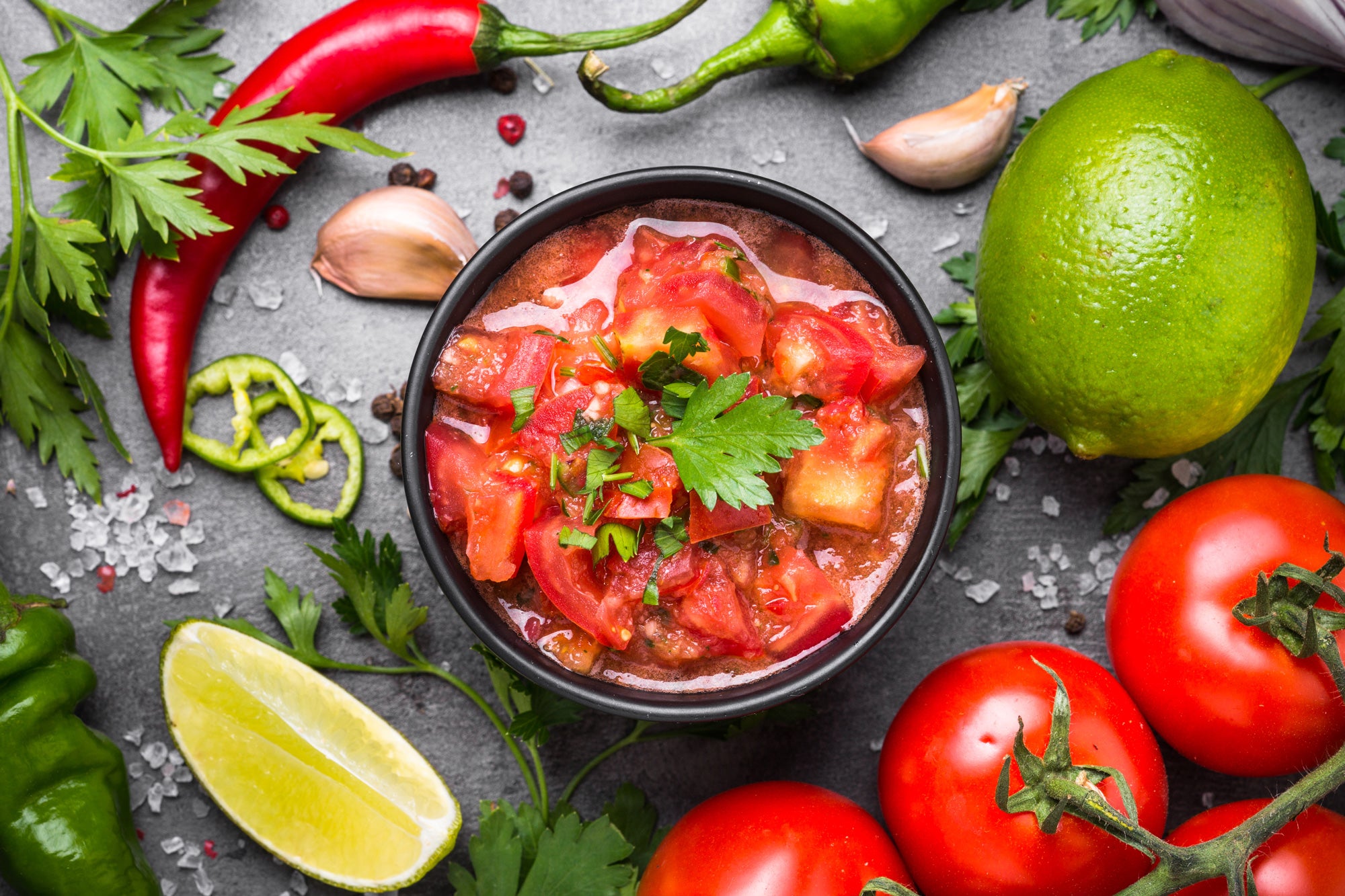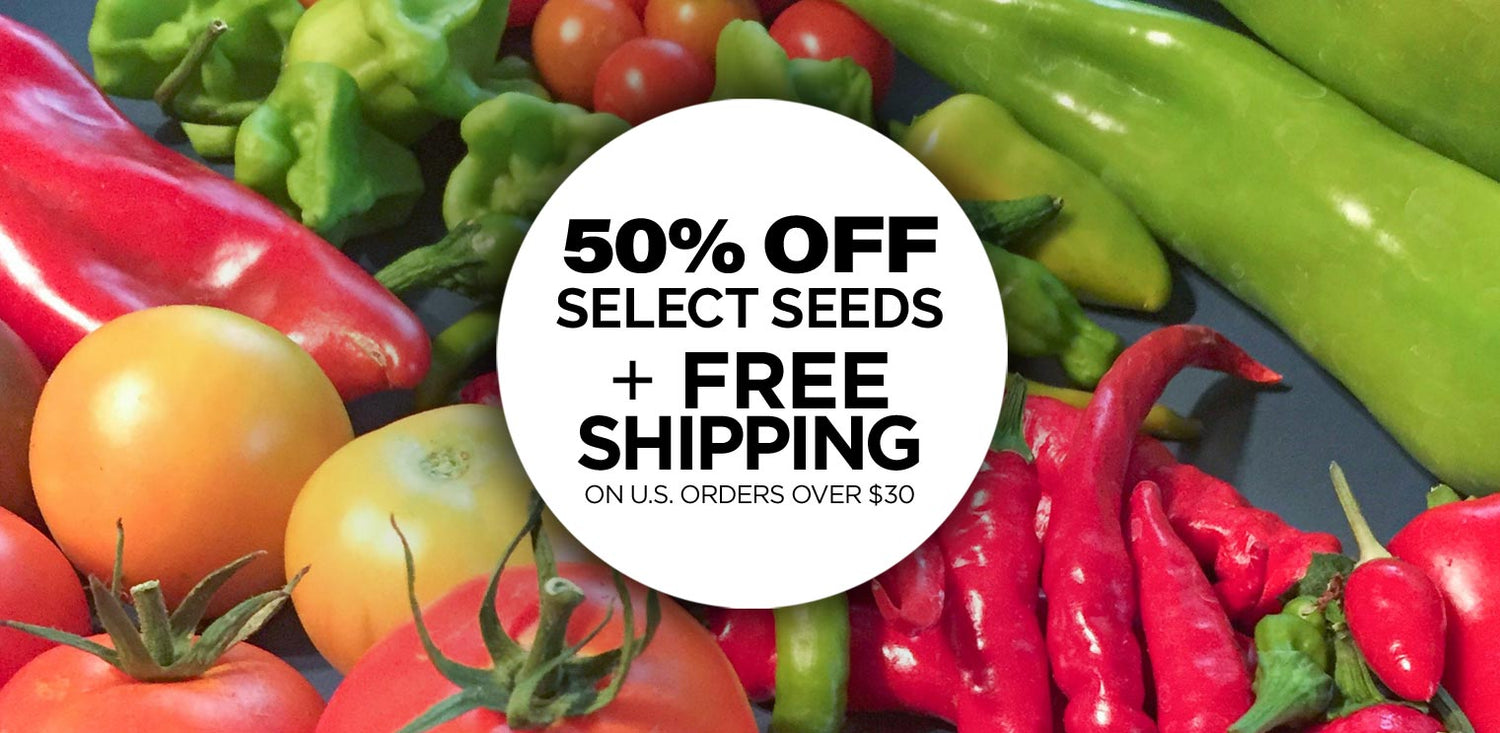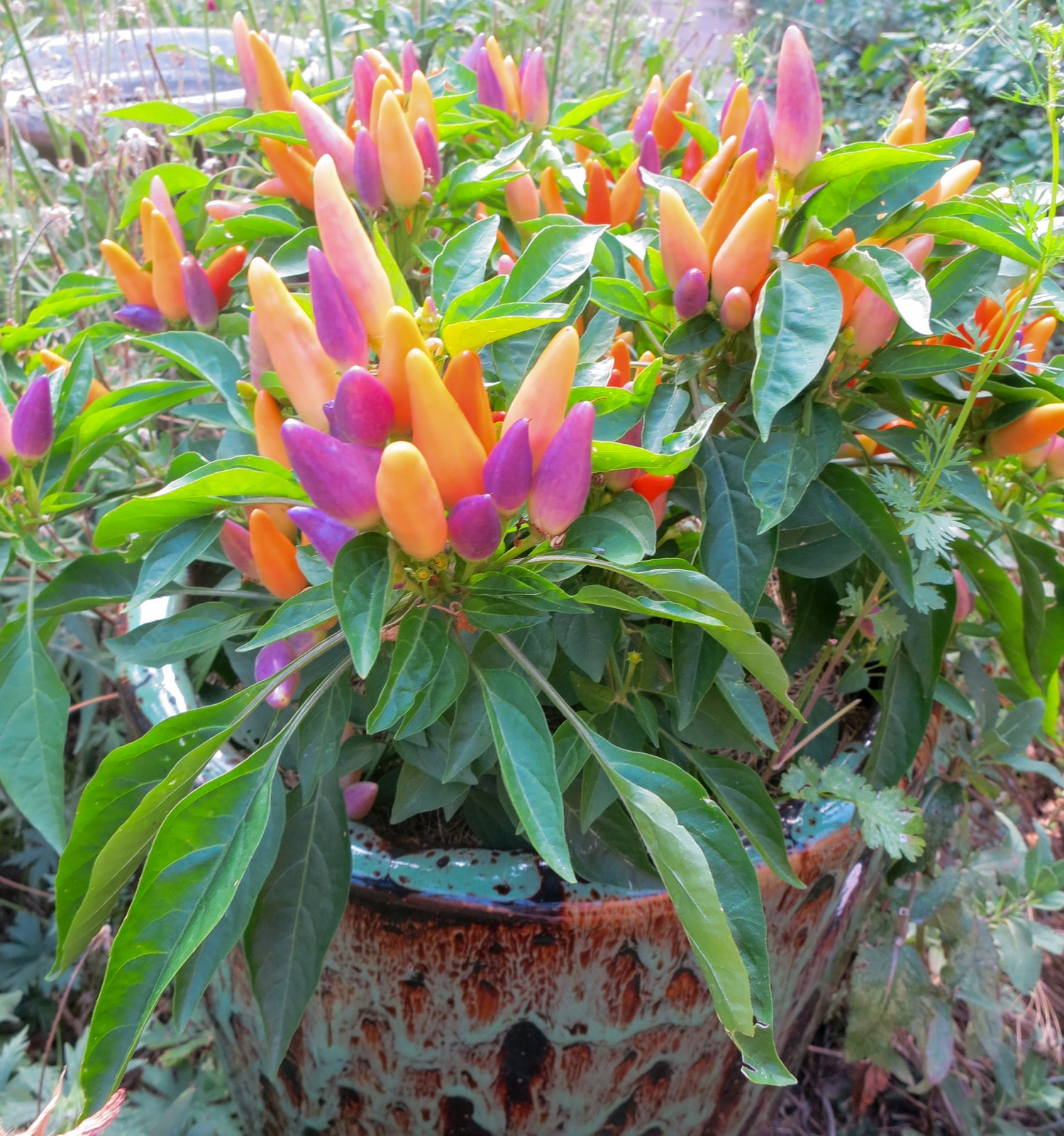
It takes about six to eight weeks to grow tomatoes from a seed to a seedling plant that is ready to transplant outside. Start seeds indoors for best results. In 5 to 12 days your tomato seeds should germinate. Germination is best in warm temperatures (70° to 80° Fahrenheit). A heat mat for seed starting will dramatically hasten tomato seed germination. Sow seeds in cells filled with seedling mix and lightly sprinkle a bit on top to cover. Gently moisten the cells with water and place on a seedling mat under a grow light.

Make sure to provide Good Drainage for Tomato Seedlings:
Seedling Cell Trays need drainage holes. The seedling tray can be placed directly into a solid seedling tray without holes to keep table dry. The 18-cell seedling tray is a good size if you are not going to bump your seedlings up to another pot size before transplanting outside. It will produce a nice tight root system in 8 weeks. You will want to transplant your tomato seedlings up once the roots start coming out of the bottom of the tray, the deeper pots are best as you can bury the stem to expand and deepen the root system.
Good Seedling Mix for starting Tomato Seeds:
Seedling Mix for your seeds need to be fine with great water holding properties and nutrients. If tiny sticks are present remove them from the seedling mix. Don't use outdoor soil, peat pellets, compost or top soil – find seedling mix for the best results as that will be well-draining for the healthiest tomato seedlings.
Heat helps with Tomato Seed germination:
A Seedling Heat Mat is very helpful. Seeds can take weeks longer to germinate if they cool off at night. The 9 x 19-1/2" fits nicely under one grow tray. Keep the seedling mat plugged in 24 hours per day. The seedling soil will dry out quickly on this mat. Pay close attention and keep your soil moist at all times. You may have to water everyday.

Lighting for Tomato Seedlings:
A sunny windowsill is usually not enough light to keep seedlings growing strong. You can also use any florescent lights or any of the new LED grow lights. Just make sure it's not TOO bright - read our post: "Can seedlings get too much light?" to find out what happens if your light is too bright and too close to your seedlings. We love the Jump Start T5 Grow Light system, which is great as far as lighting for a seedling tray goes. The light ballast can be lowered to be 2-4" from your seedlings , and then raised as they grow taller. This avoids the elongating of plants trying to reach light. The light be can plugged into a light timer and then into an outlet. 12 hours on and 12 off is good.
We have also had great success starting tomato seeds in an older Aerogarden with a seed starting tray, which is a great space saver, though you may need to transplant them sooner since they will quickly out-grow the Aerogarden in the seed starter trays. Don't let them get rootbound or they'll get stuck in the styrofoam tray!
Transplant Tomato Seedlings into larger containers:
If you start tomatoes early enough, you'll likely need to transplant them into larger containers to keep them from getting root-bound, and allow for more growth. You don't want tomato seedlings to get root bound! When transplanting them into larger pots, choose deep 4"+ tall pots and plant the tomato seedlings deep, burying part of the stem and removing the lower leaves to help them develop deeper root systems. Same goes when you transplant them into the garden, the deeper the stem you bury, the deeper the root system will be! All those little hairs on their stems will turn into roots when buried. The deeper and larger root system will help your tomato plant grow quickly and flourish, providing you with more tomatoes!
Air Circulation & Movement:
Once your tomato seeds germinate, it's important to have air circulation and movement, either by putting a fan on your seedlings or by brushing them daily with your hands. This stimulates them to grow stockier and have stronger stems - and also helps prevent damping off, a common seedling ailment that causes seedlings to shrivel up and die. Another huge bonus of air circulation and movement is that your tomato seedlings won't be so leggy and floppy! They will grow much stronger with movement.
Avoid Soggy Roots:
Tomatoes, like most vegetables, do not like soggy roots – and can drown if saturated in constantly soggy, wet growing mix. Make sure to let the growing mix dry out slightly between waterings, and don't let them sit in water so that the soil on the top feels soggy for long periods of time. Gardeners have a tendency to over-love our plants with too much water, so don't do it! On the other hand, when small, tomato seedlings' growing mix should be kept moist – so don't let them dry out to bone dry for too long or they also may perish or get stunted.

Fertilizer:
We like using organic Superthrive or other organic liquid fertilizer. Once a week, starting after the first week. Water your tray with a dilute solution of Superthrive or other liquid fertilizer and water, go with less fertilizer rather than more! Once we transplant outdoors, we also like to use Kelp and Fish fertilizer outdoors in the garden (though these are too stinky to use when starting your seeds indoors!)
And, of course healthy soil is a must – avoiding chemicals & pesticides while adding lots of homemade compost to your garden soil will help feed your tomato plants all summer long.
Harden off your Tomato Seedlings:
After starting tomato seeds indoors, it's very important to harden off your seedlings before planting outdoors. This simply means to expose them to full sun and the outdoor breezes gradually, start out with an hour or two in dappled shade, then ease them into the sun to work up from just one hour in the sun up to a full day of sun over a period of several days. We also like to leave them outside overnight for a night or two. This will help the seedlings get used to the sun's strong rays and the breezes and temperatures. If you transplant indoor-grown seedlings directly into full sun in the garden, then they will be shocked and often will wither and be stunted until they recover. So don't forget this crucial step!

Tomato Plant Companions:
Marigolds are said to help with tomatoes thrive, and we like how pretty they are, too. The bees also seem to like them especially in late summer when they are blooming like crazy. We love planting marigolds around tomatoes which seem to keep them healthier and aphid-free. We've read that research says that growing Marigolds around your tomatoes also protects the tomato plants from harmful root-knot nematodes in the soil. Whatever it is, it seems to help we think so we plant them every year.
You can also plant other native flowers for your area – we like to add Coneflowers and other pollinator plants in and around tomato gardens to bring in lots of the beneficial insects to do pest control for us. Just make sure to give the tomato plants a wide berth, they turn into huge plants!
Basil is another tomato companion plant that does double duty in the tomato garden: Basil can help deter whiteflies, aphids, and thrips from your tomato plants – AND - it is the perfect complement to tomatoes in the kitchen! We love making pesto, adding basil to tomato salads and dressings, or on top of sandwiches and of course for a heirloom tomato Caprese salad!
Want to grow tomatoes faster from seed?
Check out our Fastest Growing Tomatoes »

These short season tomatoes are great if you're starting seeds late, or if you just like to bite into delicious homegrown tomatoes earlier in the summer!



















